He-Feng Yin
Face recognition via compact second order image gradient orientations
Jan 29, 2022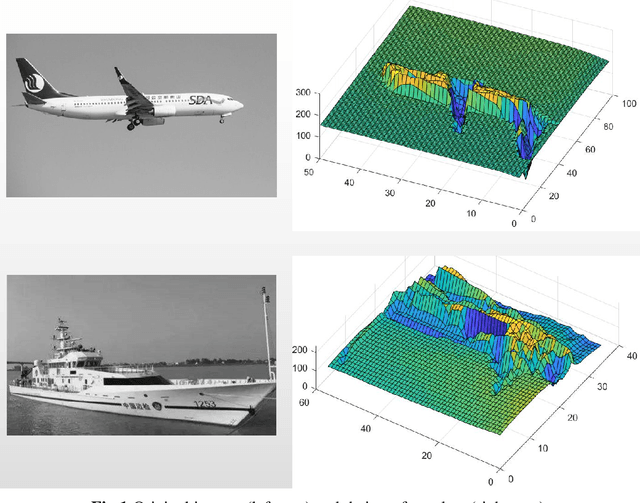

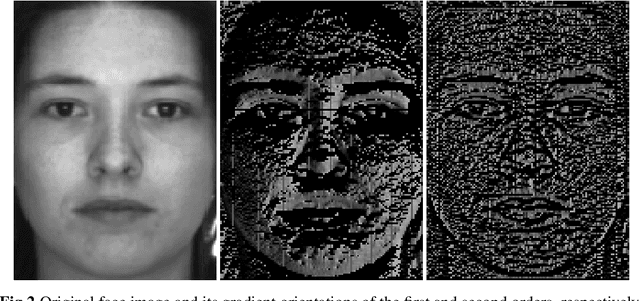
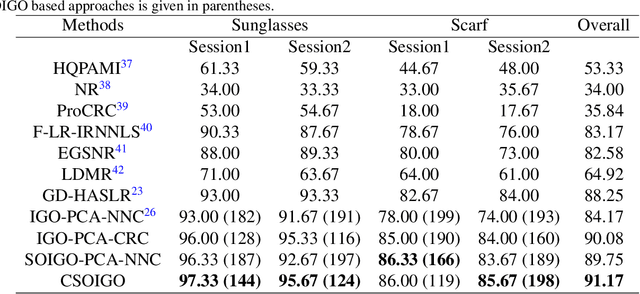
Abstract:Conventional subspace learning approaches based on image gradient orientations only employ the first-order gradient information. However, recent researches on human vision system (HVS) uncover that the neural image is a landscape or a surface whose geometric properties can be captured through the second order gradient information. The second order image gradient orientations (SOIGO) can mitigate the adverse effect of noises in face images. To reduce the redundancy of SOIGO, we propose compact SOIGO (CSOIGO) by applying linear complex principal component analysis (PCA) in SOIGO. Combined with collaborative representation based classification (CRC) algorithm, the classification performance of CSOIGO is further enhanced. CSOIGO is evaluated under real-world disguise, synthesized occlusion and mixed variations. Experimental results indicate that the proposed method is superior to its competing approaches with few training samples, and even outperforms some prevailing deep neural network based approaches. The source code of CSOIGO is available at https://github.com/yinhefeng/SOIGO.
MOON: Multi-Hash Codes Joint Learning for Cross-Media Retrieval
Aug 17, 2021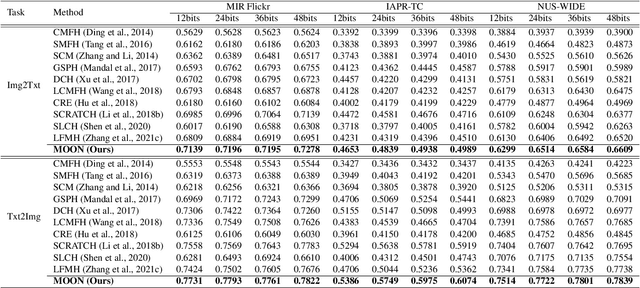
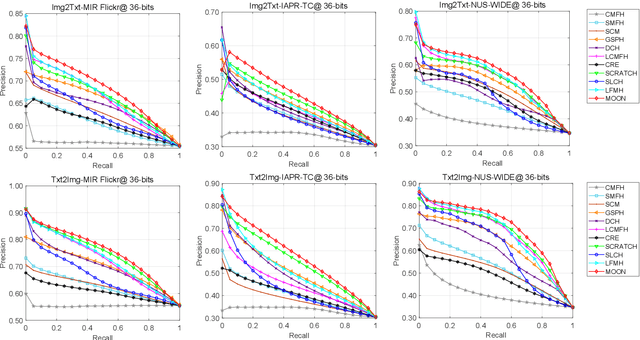
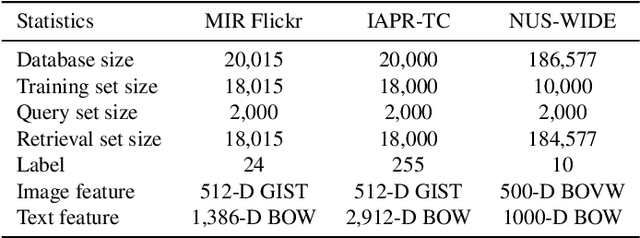
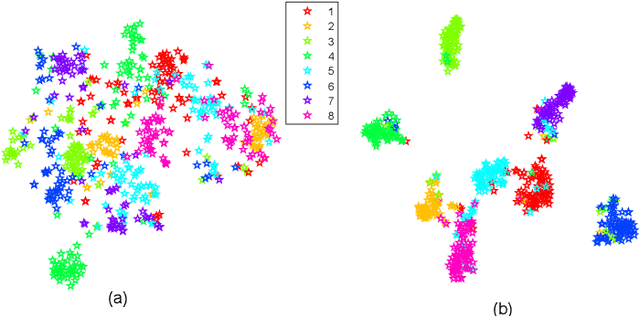
Abstract:In recent years, cross-media hashing technique has attracted increasing attention for its high computation efficiency and low storage cost. However, the existing approaches still have some limitations, which need to be explored. 1) A fixed hash length (e.g., 16bits or 32bits) is predefined before learning the binary codes. Therefore, these models need to be retrained when the hash length changes, that consumes additional computation power, reducing the scalability in practical applications. 2) Existing cross-modal approaches only explore the information in the original multimedia data to perform the hash learning, without exploiting the semantic information contained in the learned hash codes. To this end, we develop a novel Multiple hash cOdes jOint learNing method (MOON) for cross-media retrieval. Specifically, the developed MOON synchronously learns the hash codes with multiple lengths in a unified framework. Besides, to enhance the underlying discrimination, we combine the clues from the multimodal data, semantic labels and learned hash codes for hash learning. As far as we know, the proposed MOON is the first work to simultaneously learn different length hash codes without retraining in cross-media retrieval. Experiments on several databases show that our MOON can achieve promising performance, outperforming some recent competitive shallow and deep methods.
Affine Non-negative Collaborative Representation Based Pattern Classification
Jul 10, 2020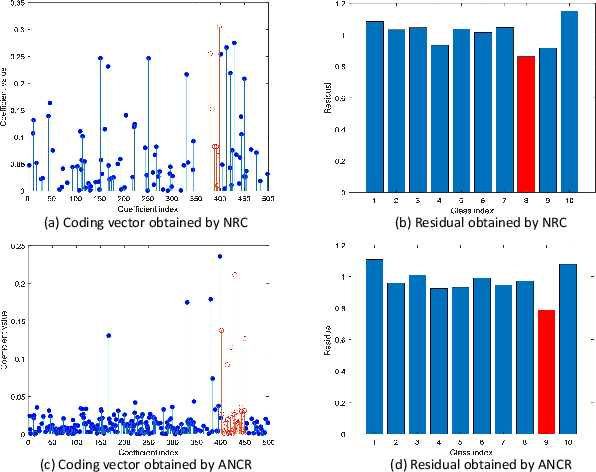
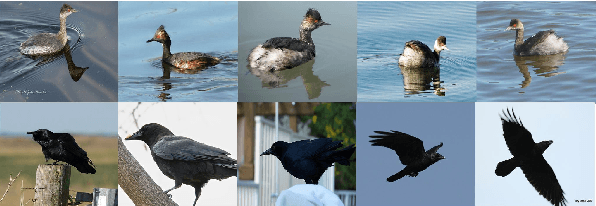


Abstract:During the past decade, representation-based classification methods have received considerable attention in pattern recognition. In particular, the recently proposed non-negative representation based classification (NRC) method has been reported to achieve promising results in a wide range of classification tasks. However, NRC has two major drawbacks. First, there is no regularization term in the formulation of NRC, which may result in unstable solution and misclassification. Second, NRC ignores the fact that data usually lies in a union of multiple affine subspaces, rather than linear subspaces in practical applications. To address the above issues, this paper presents an affine non-negative collaborative representation (ANCR) model for pattern classification. To be more specific, ANCR imposes a regularization term on the coding vector. Moreover, ANCR introduces an affine constraint to better represent the data from affine subspaces. The experimental results on several benchmarking datasets demonstrate the merits of the proposed ANCR method. The source code of our ANCR is publicly available at https://github.com/yinhefeng/ANCR.
Learning efficient structured dictionary for image classification
Feb 09, 2020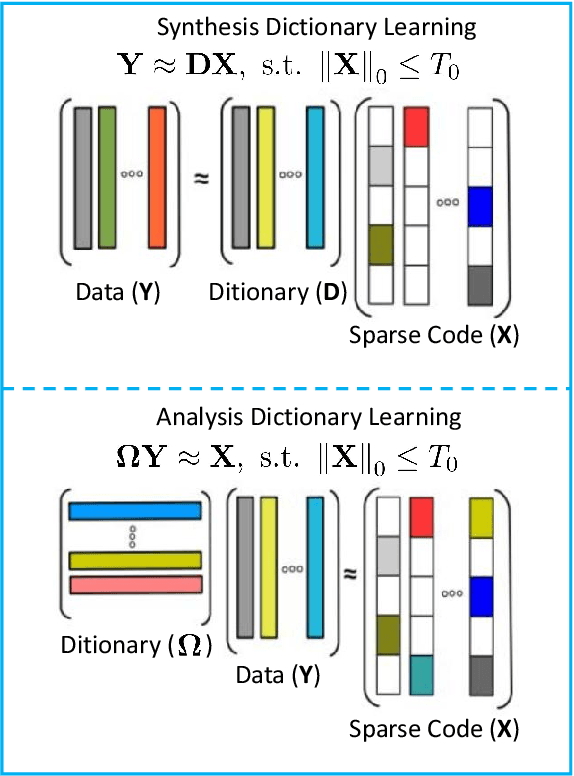
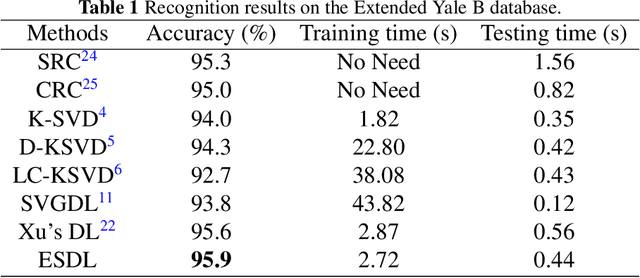
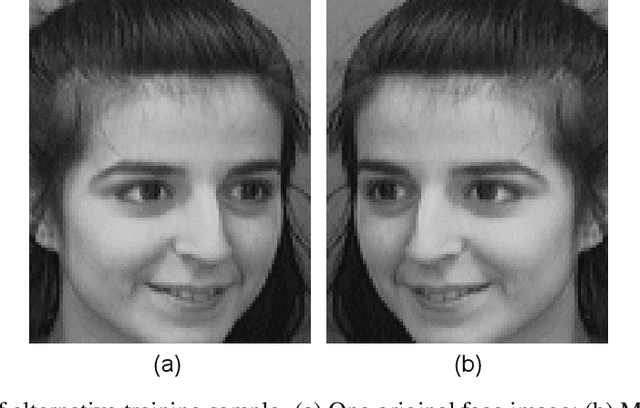
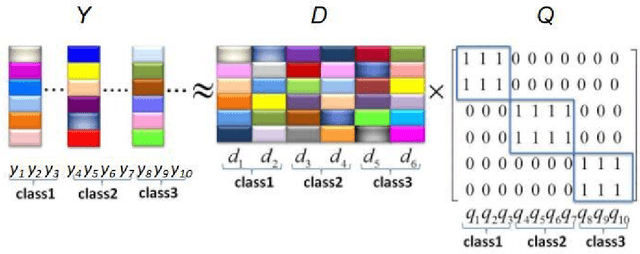
Abstract:Recent years have witnessed the success of dictionary learning (DL) based approaches in the domain of pattern classification. In this paper, we present an efficient structured dictionary learning (ESDL) method which takes both the diversity and label information of training samples into account. Specifically, ESDL introduces alternative training samples into the process of dictionary learning. To increase the discriminative capability of representation coefficients for classification, an ideal regularization term is incorporated into the objective function of ESDL. Moreover, in contrast with conventional DL approaches which impose computationally expensive L1-norm constraint on the coefficient matrix, ESDL employs L2-norm regularization term. Experimental results on benchmark databases (including four face databases and one scene dataset) demonstrate that ESDL outperforms previous DL approaches. More importantly, ESDL can be applied in a wide range of pattern classification tasks. The demo code of our proposed ESDL will be available at https://github.com/li-zi-qi/ESDL.
Face Verification via learning the kernel matrix
Jan 21, 2020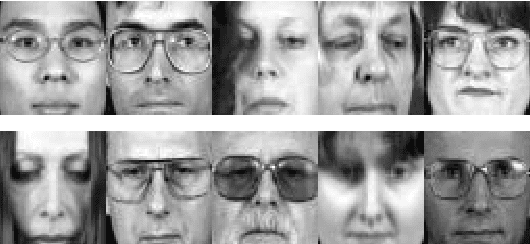
Abstract:The kernel function is introduced to solve the nonlinear pattern recognition problem. The advantage of a kernel method often depends critically on a proper choice of the kernel function. A promising approach is to learn the kernel from data automatically. Over the past few years, some methods which have been proposed to learn the kernel have some limitations: learning the parameters of some prespecified kernel function and so on. In this paper, the nonlinear face verification via learning the kernel matrix is proposed. A new criterion is used in the new algorithm to avoid inverting the possibly singular within-class which is a computational problem. The experimental results obtained on the facial database XM2VTS using the Lausanne protocol show that the verification performance of the new method is superior to that of the primary method Client Specific Kernel Discriminant Analysis (CSKDA). The method CSKDA needs to choose a proper kernel function through many experiments, while the new method could learn the kernel from data automatically which could save a lot of time and have the robust performance.
Multiplication fusion of sparse and collaborative-competitive representation for image classification
Jan 20, 2020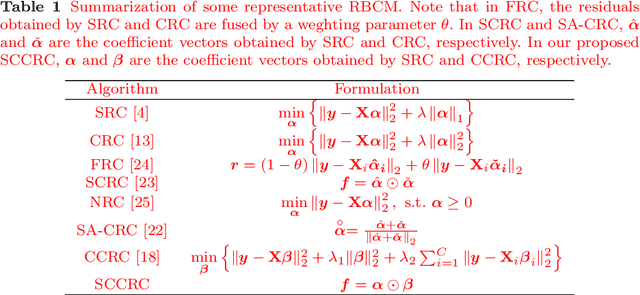
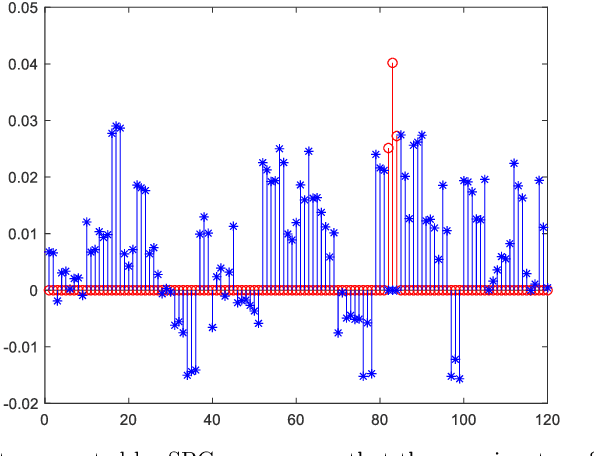


Abstract:Representation based classification methods have become a hot research topic during the past few years, and the two most prominent approaches are sparse representation based classification (SRC) and collaborative representation based classification (CRC). CRC reveals that it is the collaborative representation rather than the sparsity that makes SRC successful. Nevertheless, the dense representation of CRC may not be discriminative which will degrade its performance for classification tasks. To alleviate this problem to some extent, we propose a new method called sparse and collaborative-competitive representation based classification (SCCRC) for image classification. Firstly, the coefficients of the test sample are obtained by SRC and CCRC, respectively. Then the fused coefficient is derived by multiplying the coefficients of SRC and CCRC. Finally, the test sample is designated to the class that has the minimum residual. Experimental results on several benchmark databases demonstrate the efficacy of our proposed SCCRC. The source code of SCCRC is accessible at https://github.com/li-zi-qi/SCCRC.
A sparsity augmented probabilistic collaborative representation based classification method
Dec 27, 2019
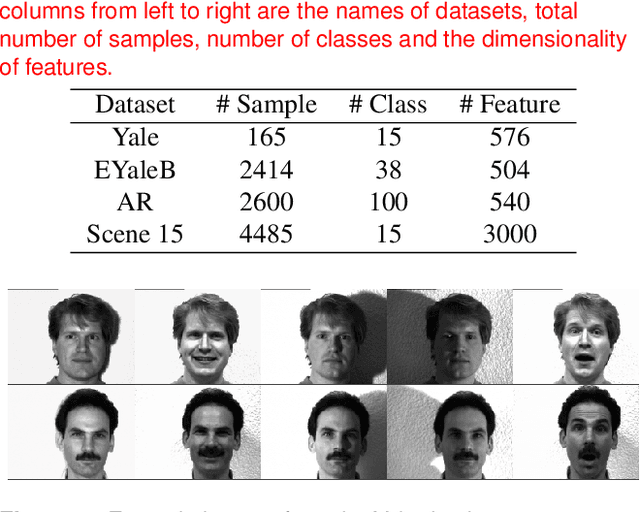
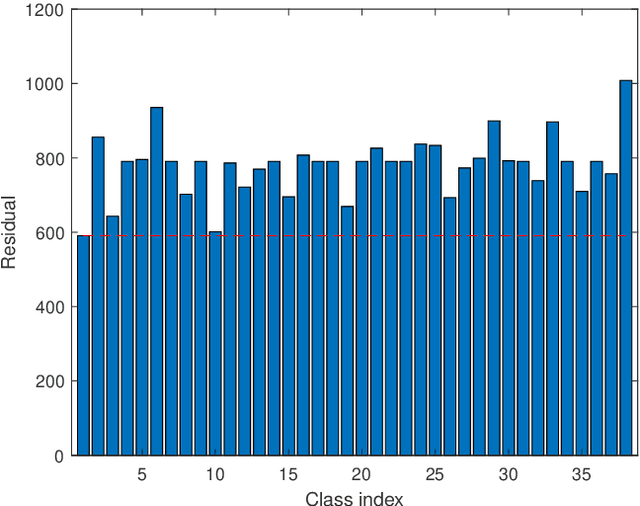
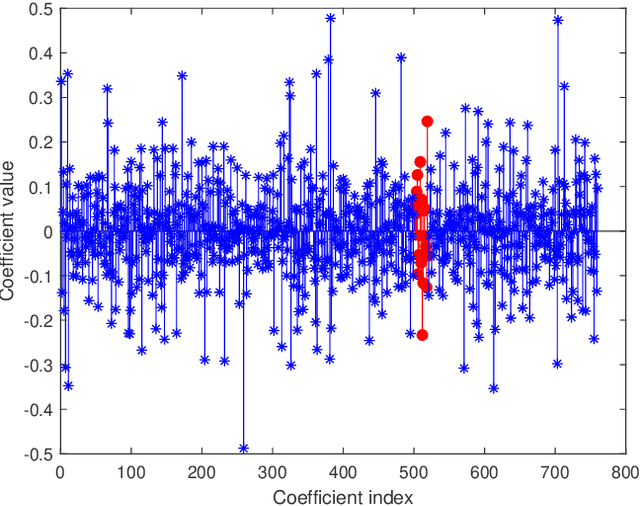
Abstract:In order to enhance the performance of image recognition, a sparsity augmented probabilistic collaborative representation based classification (SA-ProCRC) method is presented. The proposed method obtains the dense coefficient through ProCRC, then augments the dense coefficient with a sparse one, and the sparse coefficient is attained by the orthogonal matching pursuit (OMP) algorithm. In contrast to conventional methods which require explicit computation of the reconstruction residuals for each class, the proposed method employs the augmented coefficient and the label matrix of the training samples to classify the test sample. Experimental results indicate that the proposed method can achieve promising results for face and scene images. The source code of our proposed SA-ProCRC is accessible at https://github.com/yinhefeng/SAProCRC.
A Compared Study Between Some Subspace Based Algorithms
Dec 23, 2019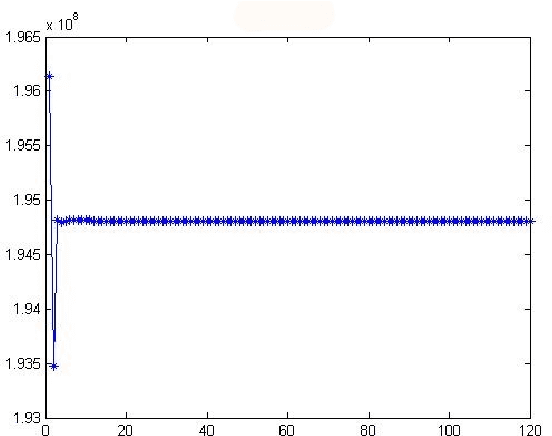

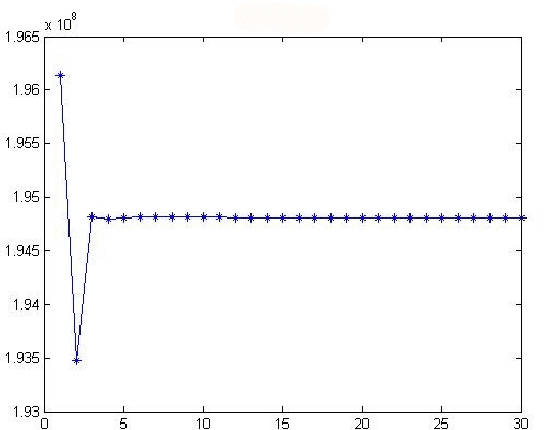

Abstract:The technology of face recognition has made some progress in recent years. After studying the PCA, 2DPCA, R1-PCA, L1-PCA, KPCA and KECA algorithms, in this paper ECA (2DECA) is proposed by extracting features in PCA (2DPCA) based on Renyi entropy contribution. And then we conduct a study on the 2DL1-PCA and 2DR1-PCA algorithms. On the basis of the experiments, this paper compares the difference of the recognition accuracy and operational efficiency between the above algorithms.
Research on Clustering Performance of Sparse Subspace Clustering
Dec 21, 2019
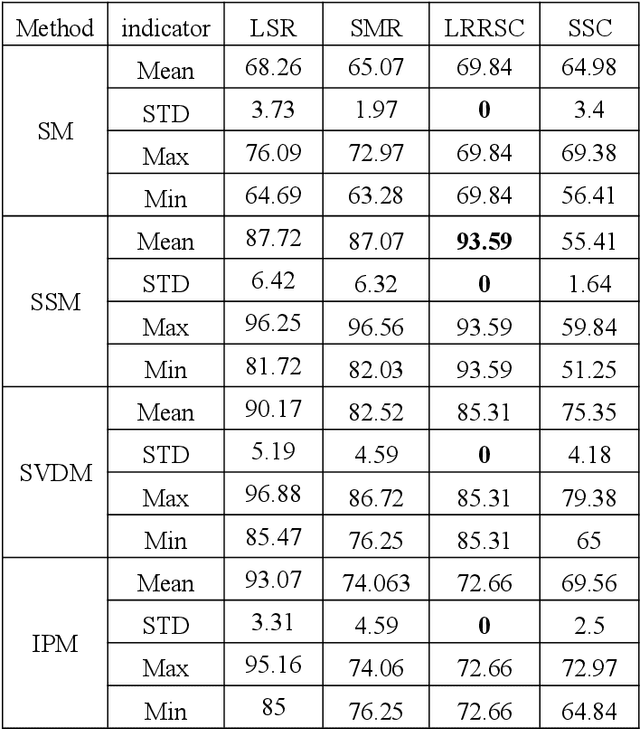

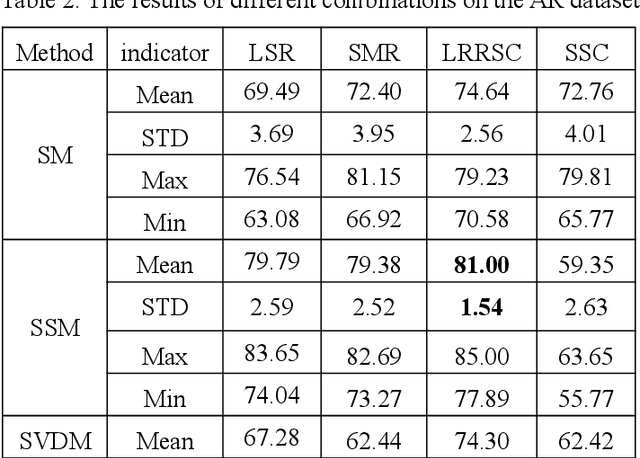
Abstract:Recently, sparse subspace clustering has been a valid tool to deal with high-dimensional data. There are two essential steps in the framework of sparse subspace clustering. One is solving the coefficient matrix of data, and the other is constructing the affinity matrix from the coefficient matrix, which is applied to the spectral clustering. This paper investigates the factors which affect clustering performance from both clustering accuracy and stability of the approaches based on existing algorithms. We select four methods to solve the coefficient matrix and use four different ways to construct a similarity matrix for each coefficient matrix. Then we compare the clustering performance of different combinations on three datasets. The experimental results indicate that both the coefficient matrix and affinity matrix have a huge influence on clustering performance and how to develop a stable and valid algorithm still needs to be studied.
Collaborative representation-based robust face recognition by discriminative low-rank representation
Dec 17, 2019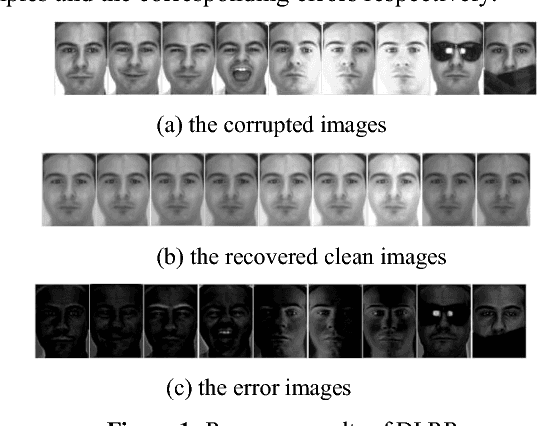
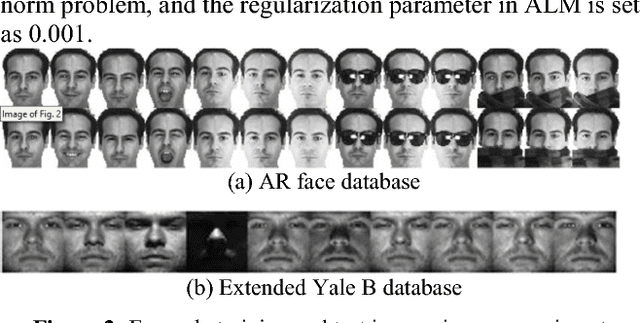
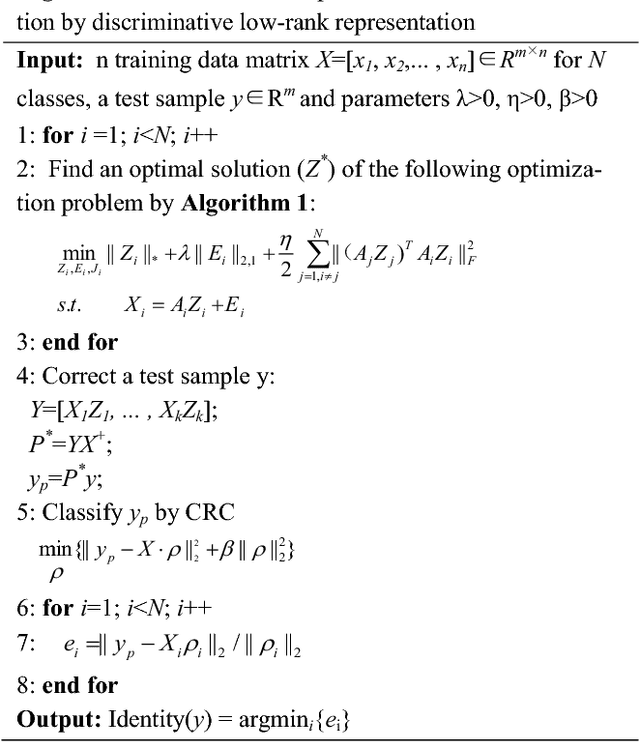
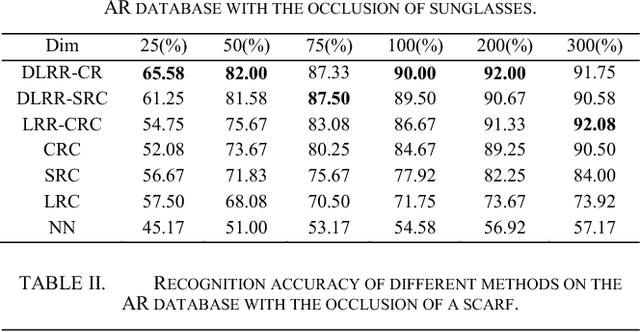
Abstract:We consider the problem of robust face recognition in which both the training and test samples might be corrupted because of disguise and occlusion. Performance of conventional subspace learning methods and recently proposed sparse representation based classification (SRC) might be degraded when corrupted training samples are provided. In addition, sparsity based approaches are time-consuming due to the sparsity constraint. To alleviate the aforementioned problems to some extent, in this paper, we propose a discriminative low-rank representation method for collaborative representation-based (DLRR-CR) robust face recognition. DLRR-CR not only obtains a clean dictionary, it further forces the sub-dictionaries for distinct classes to be as independent as possible by introducing a structural incoherence regularization term. Simultaneously, a low-rank projection matrix can be learned to remove the possible corruptions in the testing samples. Collaborative representation based classification (CRC) method is exploited in our proposed method which has closed-form solution. Experimental results obtained on public face databases verify the effectiveness and robustness of our method.
 Add to Chrome
Add to Chrome Add to Firefox
Add to Firefox Add to Edge
Add to Edge